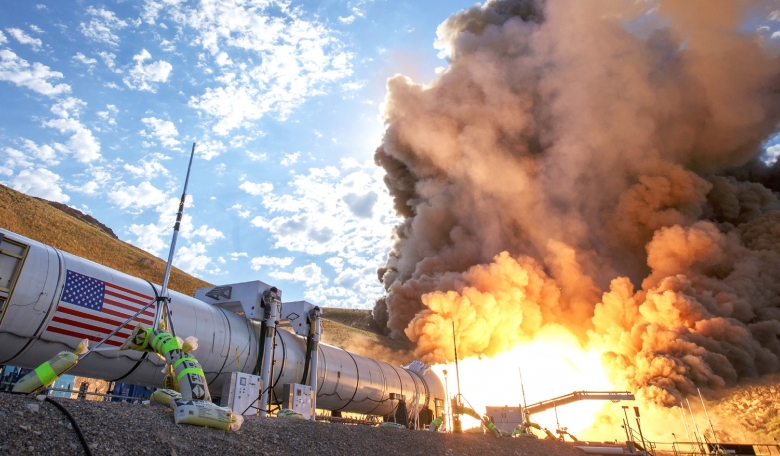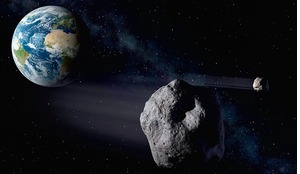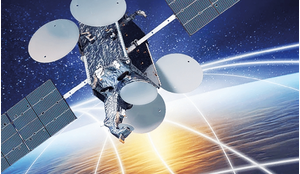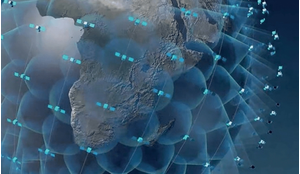On 20 July 1969, astronauts Neil Armstrong and Buzz Aldrin stepped onto the Moon and accomplished one of the greatest achievements in the history of humankind. Subsequent missions to explore the lunar surface continued, with astronaut Gene Cernan leaving the last footprint on the Moon in December 1972. Since then, there have been more than 100 US Space Shuttle missions and a continuous human presence in space on the International Space Station (ISS). These are significant accomplishments as far as human spaceflight is concerned, but we have been trapped in the repetitive cycle of low Earth orbit for more than 40 years. If we are to explore this Solar System, we must exit from this pattern.
Exploration has inspired mankind throughout history, and is one of the characteristics of a progressing society. When a nation explores the unknown, it leads to innovation, discovery and, ultimately, prosperity. In addition, it fosters national prestige and inspires citizens, both old and young, to pursue excellence.
So what really is the next logical step for NASA? Is it to return to the Moon, or press forward to Mars? With shrinking space budgets, a lack of political will, and shortages of technological and medical knowledge, the compass points to NASA going back to the Moon. NASA is at a critical juncture. The decisions made by the next President and the US Congress will determine the future of human exploration in our Solar System for decades to come.
Our Moon has certainly helped define life on Earth. As well as scientific value, it offers the possibility of rich, raw resources that could benefit life on Earth. Mars maybe the horizon goal - but there is a hefty price tag and a unique set of problems that must be solved for a successful crewed mission to Mars and back.
Chalk and cheese
A journey to the Moon takes approximately three days, a distance of 239,000 miles, and humans can relatively easily ‘come and go’ due to its proximity to Earth. It has one-sixth of the Earth’s gravity (not ideal for sustaining the bones and muscles of the human body), has no atmosphere or weather, and affords no protection from cosmic radiation. Day and night cycles equal about 14 Earth days and lunar explorers will encounter extremely high temperatures during the Moon ‘day’ (250F) and very frigid temperatures (-380F) during a Moon ‘night’.
Moon dust, called regolith, will also be a serious hazard for astronauts and their equipment.
The Moon does, however, promise large amounts of natural ice at its frozen polar regions and, because it is only three days away, rescue and a quick return is feasible in an emergency.
Mars, on the other hand, is at least eight months away, at a distance of approximately 46 million miles, and only then when the Earth and Mars have an aligned orbit. Any crew arriving at the red planet would likely need to stay there for up to a year until Earth and Mars are lined up in orbit again - and certainly there is no chance for a quick rescue operation from home.
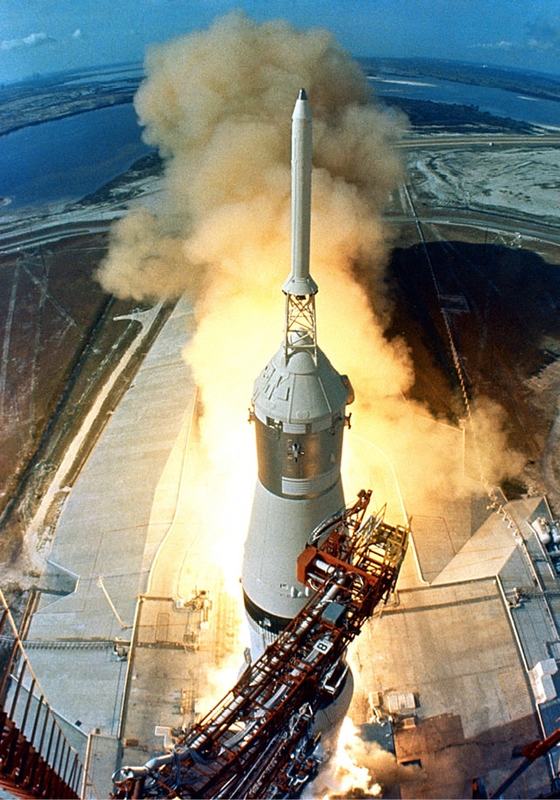 Saturn V launch in July 1969 of the first Apollo lunar landing mission. The large version of NASA’s new heavy lift SLS rocket will be 40 feet taller than a Saturn V, coming in at about 400 feet.
Saturn V launch in July 1969 of the first Apollo lunar landing mission. The large version of NASA’s new heavy lift SLS rocket will be 40 feet taller than a Saturn V, coming in at about 400 feet.
Mars has about 38 per cent of Earth’s gravity, which is better physiologically for humans than the Moon. It has an atmosphere of carbon dioxide and a more Earth-equivalent day and night cycle (a Martian day is 24 hours and 39 minutes). Daytime temperatures can reach around 80F but drop to as low as minus 200F at the poles. Mars also has a type of water-ice, which might be a source of rocket fuel, and there is a possibility that the Martian soil could be modified to grow food. But, as on the Moon, dust would be a problem.
Initially, it appears Mars might be a more ‘people-friendly’ planet. Its great distance, however, remains a deal breaker
Initially, it appears Mars might be a more ‘people-friendly’ planet and desirable location. Its great distance, however, remains a deal breaker. This challenge alone generates such problems as psychological stress, bone loss and muscle atrophy, and exposure to cancer-causing galactic radiation.
Any human-rated entry, descent and landing (EDL) system must be capable of delivering at least 10 times the mass and volume of current robots exploring Mars - achieving this is both costly and fraught with challenges. Technical and political obstacles aside, humans travelling to Mars will need food, water, protective shelter, medical supplies, entertainment, friendship, and a return ticket back to Earth. This is a unique set of problems to solve.
Psychological effects
Separation, long term isolation and the dynamics of living in close quarters for extended periods of time is one of the big challenges. The Apollo lunar missions lasted about a week or more, the crews could still catch sight of the Earth, and they knew they were only three days away. Although a typical stint on the ISS is about six months, astronauts in Earth orbit can still peek from the window and see their familiar home planet - and know they are but a stone’s throw from a safe return. Things would be very different on a trip to Mars with a round trip taking anything between two and three years. The crew would witness Earth becoming a small dot of light against a starry background.
Fundamentally, humankind is not going to Mars just to plant a flag on the surface and collect a few samples. In preparation for the psychological isolation of a surface mission lasting up to 18 months, Russia, ESA and China conducted ‘The Mars 500’ experiment from 2007 to 2011. This study simulated a 520-day round trip to Mars, where volunteers lived and worked in a mock mission environment, generating useful data on the psychological and social effects on people placed in a long-term and cramped living situation. Communication with the outside world had a realistic time delay of twenty-five minutes and there was only a limited supply of food and other consumables. Overall there were no reports of conflicts and difficulties encountered were solved together as a team. Cultural and language differences did not create significant problems but the effects of cosmic radiation and weightlessness could obviously not be factored into such an experiment.
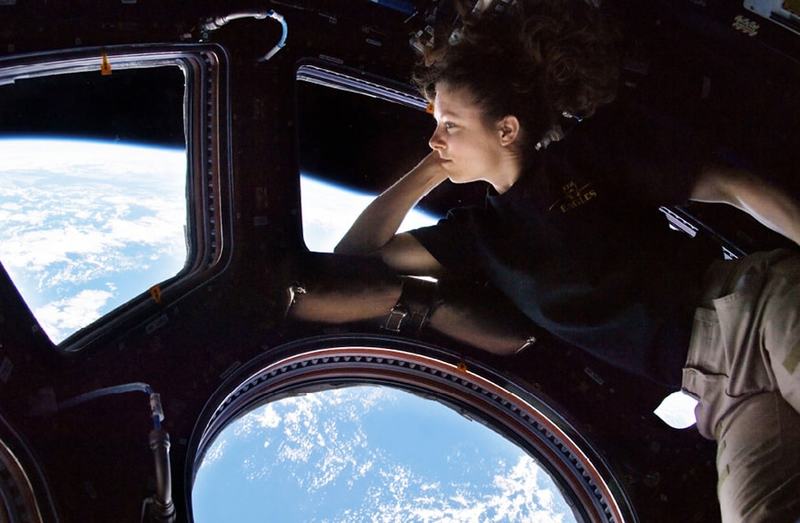 NASA astronaut Tracy Caldwell Dyson, Expedition 24 flight engineer, contemplates Earth through a Cupola window of the International Space Station, in a self-portrait photo using natural light.
NASA astronaut Tracy Caldwell Dyson, Expedition 24 flight engineer, contemplates Earth through a Cupola window of the International Space Station, in a self-portrait photo using natural light.
Physiological effects
The ISS continues to provide a useful testing platform for understanding some of the adverse effects that living and working in space has on the human body. But undertaking a trip to Mars will be very different because of exposure to cosmic radiation. Whereas an astronaut on the ISS encounters about 20 times the amount of radiation compared to Earth, a journey to the red planet increases radiation more than 300 times greater than normal exposure on Earth.
Using data gathered from radiation detectors carried by the Curiosity rover en route to Mars, scientists have estimated the instance of cancer would increase by five per cent, which is higher than NASA’s tolerances for an astronaut.
Technological challenges
The lunar environment could be a good location for a technical proving ground, validating deep space technologies while remaining in close proximity to Earth. NASA has identified a list of technologies it deems essential for a journey to Mars which include - ground operations, a heavy-launch vehicle, crew capsule, a deep-space transit vehicle with high-efficiency in-space propulsion and power, protection from radiation, optical communication, and deep-space navigation and rendezvous.
Decisions made by the next President and the US Congress will determine the future of human exploration in our Solar System for decades to come
Surface power generators will be essential for energy and astronauts will need long duration habitation modules which include life-support systems, radiation safety, protection from the environment, and medical facilities. In contrast, the ISS is Earth-reliant and dependent on re-supply flights. For a Mars mission of two years or more, astronauts will have to be both self-sufficient and Earth-independent.
In situ resource utilisation is required development, as well as comfortable EVA spacesuits, and sustainable food and water systems. Also necessary are mobile exploration vehicles and ascent propulsion for the return to Earth. Of course, this does not encompass all of the necessary technologies, but these will have to be created, matured and perfected over time.
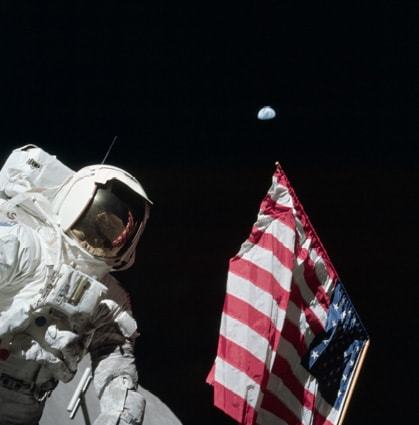 Harrison ‘Jack’ Schmitt was the first trained scientist to walk on the Moon. During the Apollo 17 mission he collected evidence of lunar volcanic activity.
Harrison ‘Jack’ Schmitt was the first trained scientist to walk on the Moon. During the Apollo 17 mission he collected evidence of lunar volcanic activity.
Lunar exploration in the coming years will be essential preparation for long journeys across our Solar System, developing and demonstrating capabilities that are independent of Earth. Returning to the Moon will, therefore, be a cornerstone of future deep-space human exploration.
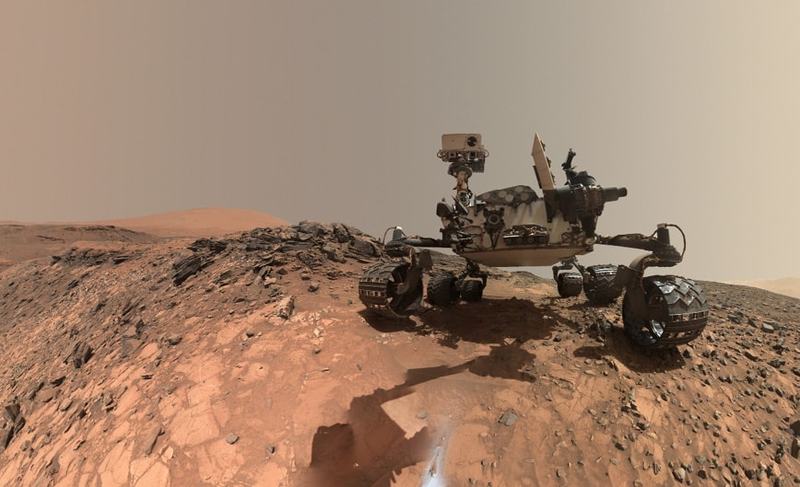 This low-angle self-portrait of NASA’s Curiosity Mars rover shows the vehicle at the site from which it reached down to drill into a rock target called ‘Buckskin’ on lower Mount Sharp. The ‘selfie’ combines several component images taken by Curiosity’s Mars Hand Lens Imager (MAHLI). For scale, the rover’s wheels are 50 cm in diameter and about 40 cm wide.
This low-angle self-portrait of NASA’s Curiosity Mars rover shows the vehicle at the site from which it reached down to drill into a rock target called ‘Buckskin’ on lower Mount Sharp. The ‘selfie’ combines several component images taken by Curiosity’s Mars Hand Lens Imager (MAHLI). For scale, the rover’s wheels are 50 cm in diameter and about 40 cm wide.
International perspective
Using data from radiation detectors carried by Curiosity, scientists have estimated the instance of cancer could increase by five per cent, which is higher than NASA tolerances for an astronaut
The International Space Station is a tribute to the ingenuity of humankind along with the shared cooperation of many countries - a crowning triumph in the arena of worldwide collaboration. With over 80 countries involved, the ISS has celebrated 16 consecutive years in low Earth orbit. Significant scientific breakthroughs are already transforming how human beings live on Earth, as well as facilitating ground-breaking research on the effects of microgravity on the human body over long periods of time.
As the technological revolution accelerates, many countries are partnering to use a variety of technologies and we must find a way to continue the pattern set by the ISS to guarantee that competition does not overshadow international cooperation.
A US perspective
In spite of seemingly urgent priorities, daily pressures and challenges that face every nation on Earth, the United States must remain committed to human space exploration.
Space inspires our children, fuels invention and innovation, and provides tangible benefits. It improves health, security, clean energy, technology and our overall quality of life.
In the future, NASA human exploration missions must remain independent of the start-stop cycle of the US, or any government’s, shifting political allegiances. In the US we have witnessed many times the start of a bold space programme, only to find Republicans cancelling Democrat initiatives, and Democrats cancelling Republican initiatives. In 2017, the incoming US President will have to take into account the geopolitical and fiscal situations, set up a winning formula, and then passionately communicate this to NASA and the American people.
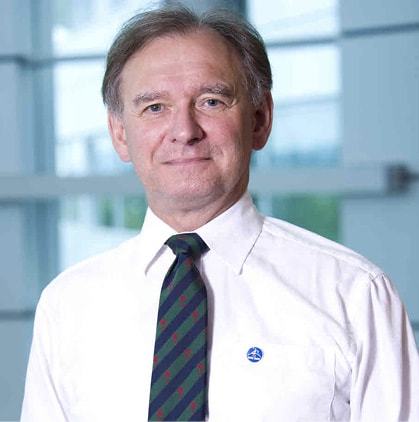 Dr David Kendall, former executive of the Canadian Space Agency (CSA), was appointed in June 2016 to chair the United Nations Committee on the Peaceful Uses of Outer Space (UN COPUOS) for two years.
Dr David Kendall, former executive of the Canadian Space Agency (CSA), was appointed in June 2016 to chair the United Nations Committee on the Peaceful Uses of Outer Space (UN COPUOS) for two years.
David Kendall, director general of the Canadian Space Agency (CSA), and chairman of the United Nations Committee on the Peaceful Uses of Outer Space (UN COPOUS), believes there would be great interest if NASA were to invite partners to join a Moon exploration programme.
“I even think China would be open to this. People need inspiration and I believe people still see that in space exploration. The next step will be the Moon - it is the most conservative step beyond LEO that makes sense. But it has to be sold right, and right now the United States doesn’t have the leadership in place to make it happen.”
Future US space policy
The ISS continues to provide a platform for understanding some of the adverse effects that living and working in space has on the human body
NASA should set up a step-by-step logical schedule of progressive and realistic goals. Each milestone must be interesting to the public, even while NASA incrementally builds its space-faring capabilities. Realisable, short-term space goals will build long-term and enduring space policy - and lasting credibility with US taxpayers, Congress, and international partners. The Moon also represents an affordable and sustainable destination that can remain stable over several US administrations.
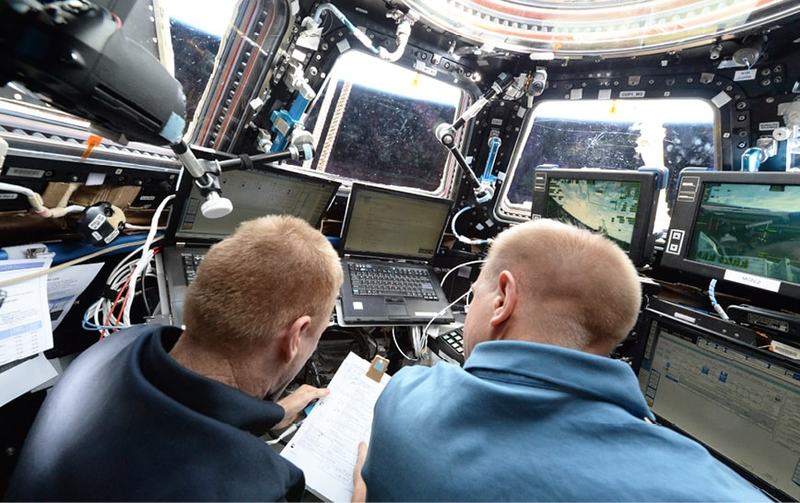 Astronauts Tim Peake (left) and Tim Kopra at work on the International Space Station.
Astronauts Tim Peake (left) and Tim Kopra at work on the International Space Station.
The sustainable path to deep space, human exploration depends on a strategy where stakeholders from government, industry, international partners and the public are committed to the programme’s success. The power of partnership will maintain ambitious human exploration plans through its ups and downs as proven by the collaboration of many nations and private companies invested in the achievements of the ISS. Missions to the Moon, Mars or beyond should not be any different.
Allyson Reneau is a recipient of an MA in International Relations from Harvard University and is an aspiring space professional. She works as an intern in the Office of International and Interagency Relations at NASA, headquarters in Washington DC. The article is drawn from her master’s thesis, which received highest honours, and does not reflect official views of NASA.





